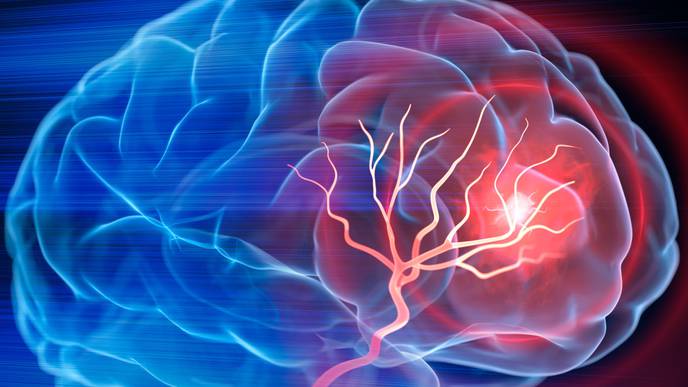ReachMD
Be part of the knowledge.™How the Brain Processes Numbers: New Procedure Improves Measurement of Human Brain Activity

Measuring human brain activity down to the cellular level—until now, this has been possible only to a limited extent. With a new approach developed by researchers at the Technical University of Munich (TUM), it will now be much easier. The method relies on microelectrodes and the support of brain tumor patients who participated in studies while undergoing "awake" brain surgery. This enabled the team to identify how our brain processes numbers.
We use numbers every day. It happens in a very concrete way when we count objects. And it happens abstractly, for example when we see the symbol "8" or do complex calculations.
In a study published in the journal Cell Reports, a team of researchers and clinicians working with Simon Jacob, Professor of Translational Neurotechnology at the Department of Neurosurgery at TUM's university hospital Klinikum rechts der Isar, was able to show how the brain processes numbers.
The researchers found that individual neurons in the brains of participants were specialized to handle specific numbers. Each one of these neurons was particularly active when its "preferred" number of elements in a dot pattern was presented to the patient. To a somewhat lesser degree this was also the case when the subjects processed number symbols.
"We already knew that animals processed numbers of objects in this way," says Prof. Jacob. "But until now, it was not possible to demonstrate conclusively how it works in humans. This has brought us a step closer to unraveling the mechanisms of cognitive functions and developing solutions when things go wrong with these brain functions, for example."
To get to this result, Prof. Jacob and his team first had to solve a fundamental problem. "The brain functions by means of electrical impulses," says Simon Jacob. "So it is by detecting these signals directly that we can learn the most about cognition and perception."
There are, however, few opportunities for direct measurements of human brain activity. Neurons cannot be individually recorded through the skull. Some medical teams surgically implant electrodes in epilepsy patients. However, these procedures do not reach the brain region believed to be responsible for processing numbers.
Innovative advancement of established approaches
Simon Jacob and an interdisciplinary team therefore developed an approach that adapts established technologies and opens up entirely new possibilities in neuroscience. At the heart of the procedure are microelectrode arrays that have undergone extensive testing in animal studies.
To ensure that the electrodes would produce reliable data in awake surgeries on the human brain, the researchers had to reconfigure them in close collaboration with the manufacturer. The trick was to increase the distance between the needle-like sensors used to record the electrical activities of a cell. "In theory, tightly packed electrodes will produce more data," says Simon Jacob. "But in practice the large number of contacts stuns the implanted brain region, so that no usable data are recorded."
The development of the procedure was possible only because patients with brain tumors agreed to support the research team. While undergoing brain surgery, they permitted sensors to be implanted and performed test tasks for the researchers. According to Simon Jacob, the experimental procedures did not negatively affect the work of the surgical team.
"Our procedure has two key advantages," says Simon Jacob. First, such tumor surgeries provide access to a much larger area of the brain. "And second, with the electrodes we used, which have been standardized and tested in years of animal trials, many more medical centers will be able to measure neuronal activity in the future," says Jacob.
While epilepsy operations are performed only at a small number of centers and on relatively few patients, he explains, many more university hospitals perform awake operations on patients with brain tumors. "With a significantly larger number of studies with standardized methods and sensors, we can learn a lot more in the coming years about how the human brain functions," says Simon Jacob.
More information: Viktor M. Eisenkolb et al, Human acute microelectrode array recordings with broad cortical access, single-unit resolution, and parallel behavioral monitoring, Cell Reports (2023). DOI: 10.1016/j.celrep.2023.112467
Citation: How the brain processes numbers: New procedure improves measurement of human brain activity (2023, June 27) retrieved 30 June 2023 from https://medicalxpress.com/news/2023-06-brain-procedure-human.html
This document is subject to copyright. Apart from any fair dealing for the purpose of private study or research, no part may be reproduced without the written permission. The content is provided for information purposes only.
Facebook Comments